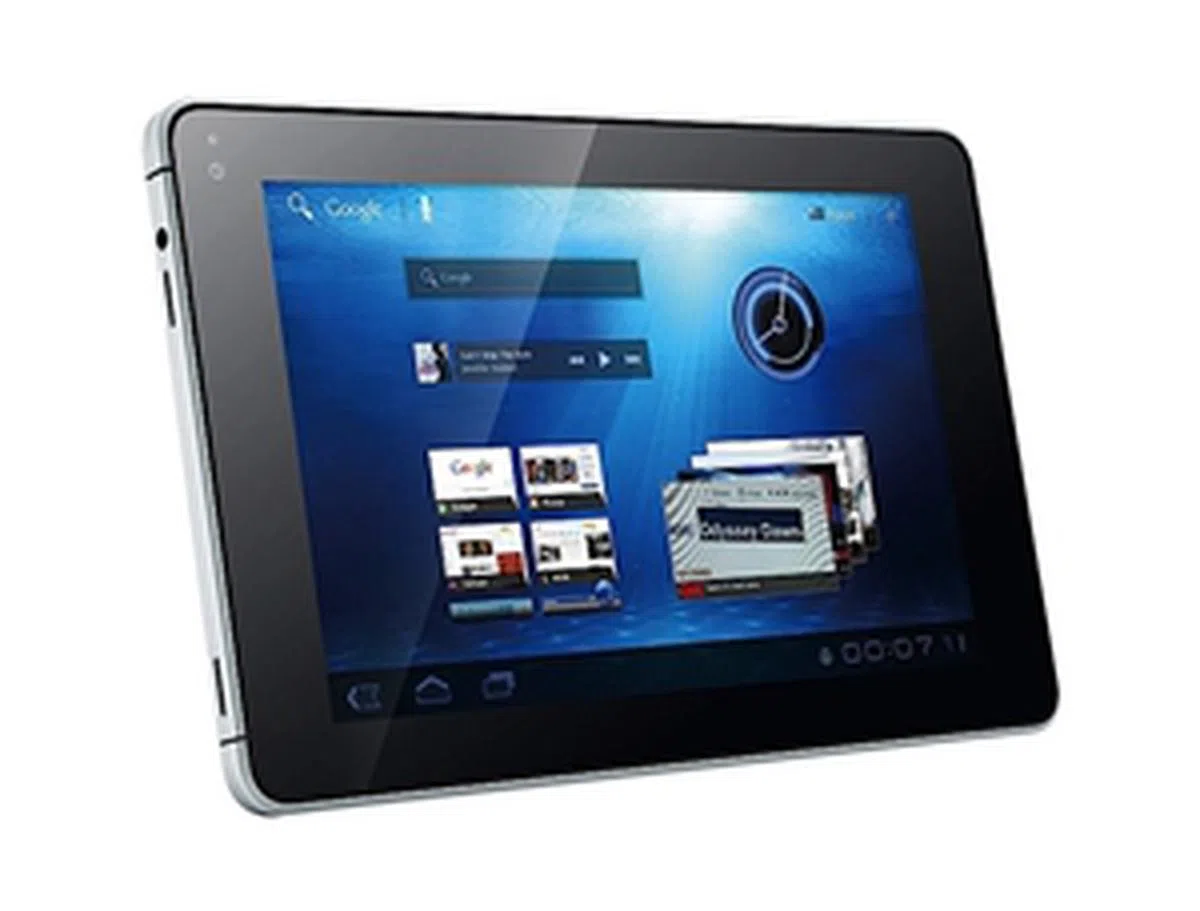Huawei's Showtime
While Huawei has traditionally kept its presence contained within the showfloors of CommunicAsia, the Chinese company took a different approach in 2011 with a global press conference held a day before CommunicAsia 2011 goes into full gear. Huawei definitely. But it did shed some light on its features, some of which includes an as-yet unseen Android 3.2 Honeycomb OS and a 1.2GHz dual-core processor. So what makes Huawei MediaPad so special? Check out our hands-on coverage below:

Victor Xu, Chief Marketing Officer, was on stage to introduce the MediaPad.

The Huawei MediaPad will be the first tablet to ship with Android 3.2.
Huawei MediaPad
The MediaPad achieves three milestones for Huawei. One, it is the world's first 7-inch Android 3.2 Honeycomb tablet. According to Huawei, the current Android 3.0/3.1 OS is only optimized for 10-inch screens. The company also believes that the 7-inch screen size strikes the balance between design, functionality and performance. Hence, Huawei collaborated with Google Android to develop the Android 3.2 OS to enhance the full potential of the tablet-centric OS on a 7-inch screen. With Android 3.2, users can see a better optimized user interface with improvements in Google Maps and graphics performance.

Chief Marketing Office Victor Wu explains the significance of MediaPad having the Android 3.2 OS.

The MediaPad units on display were loaded with Android 3.1, but we were informed that this would retain a similar look to what you see on the Android 3.0 / 3,1 variants.
Two, most tablets today run on 1GHz dual-core processors, hence the MediaPad trumps the rest of the tablets in the market by being the first to ship with a 1.2GHz dual-core processor. While we did not have the luxury of time to properly test the tablet at the event, the overall user experience was snappy. Page scrolling was smooth and fluid.
Three, it is Huawei's slimmest and lightest tablet so far, measuring just 10.5mm thick and weighing approximately 390g. Despite being slim and light, the MediaPad actually feels quite solid in the hands, thanks to the uni-body aluminum alloy construction.

The Huawei MediPad is the company's slimmest tablets, measuring in with a thickness of only 10.5mm.

The volume controls and Power button looks comfortable to press. Notice the premium look of the aluminum chassis.

The MediaPad has a 3.5mm audio jack at the top of the device, together with a pair of speakers.

You can find the charging, HDMI and USB ports at the bottom of the MediaPad.

A unibody design, with a two-tone color combination makes the MediaPad aesthetically appealing.
The other key highlight of the MediaPad is its high resolution display. It has a slightly higher pixel density compared to its competitors.

Chief Marketing Officer Victor Xu explains the superiority of the MediaPad's screen over its competitors.

The resolution of the screen is dense enough to deliver great clarity and vibrant colors albeit reflective.

We put the HTC Flyer side by side with Huawei MediaPad, and found colors to be richer on the MediaPad.
The MediaPad is also supported by Huawei Device's Hi-Space cloud solution, which aims to bring together localized content and apps for easy access to its users. Huawei also calmed our concerns about Hi-Space competing with Android Market by stating that its cloud app store will coexist with the latter. The company will also screen through any apps before putting them on Hi-Space.
Huawei has announced that the MediaPad will see a Q3 2011 availability. The company also mentioned that there will be a Wi-Fi and 3G variant for the MediaPad. Depending on the market viability, we might see just only one or both variants selling side-by-side. Huawei wasn't able to provide an estimated price range of the MediaPad, though they did mention that it is a different market segment from the . This could place the MediaPad beyond the usual competitive prices adopted by Huawei. For now, we'll be keeping a close watch on more upcoming news from the MediaPad and its Android 3.2 OS.
Key highlights of the Huawei MediaPad
|
Huawei on the Fast Track
Huawei partnered with M1 to launch South East Asia's first Long Term Evolution (LTE) network at CommunicAsia 2011. The dual band LTE network will be operating on both the 1.8GHz and 2.6GHz frequency. It will have an initial theoretical downlink speed of 75 Mbps and uplink speed of 37.5 Mbps.

For now, the LTE network covers the major areas within the financial district. Coverage will be gradually expanded and is expected to be nationwide by Q1 of 2012.
Huawei also showcased three of its mobile broadband devices at CommunicAsia, some of which will be ready high speed downlinks you get from the LTE networks.

Huawei details its achievements in the mobile broadband industry over the years.
Huawei E398
The E398 is the first multimode dongle, which offers the flexibility to switch between the different networks. It has a USB 2.0 port and runs on Green software.

Unlike the E589, the Huawei E398 is a USB dongle that can be used by one individual only at any point in time.
Huawei Mobile Wi-Fi E589
The Huawei Mobile Wi-Fi E589 is also a multimode broadband device, allowing you to utilize LTE/3G/2G networks. It also has a microSD card slot that allows you to share files on the card.

The Huawei Mobile Wi-Fi E589 supports the LTE, 3G and 2G networks.
The main feature of the E589 dongle is that it is multimode, which allows it to function across LTE, 3G and 2G networks. As such, should you fail to latch onto the LTE network, there's always the existing 3G networks to fall back on. It has an estimated surfing time of about 6 hours. It also has a microSD slot where you can share files stored on the card.
Our articles may contain affiliate links. If you buy through these links, we may earn a small commission.
